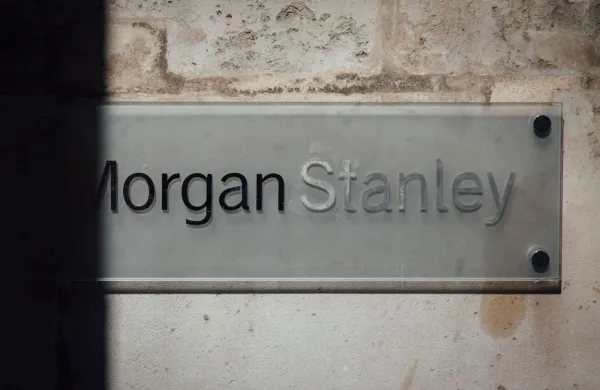Shang-Jin Wei, chief economist of the Asian Development Bank, isn’t shy about making it known that he disagrees with former U.S. Treasury secretary Lawrence Summers. “We don’t subscribe to the secular stagnation hypothesis proposed by Larry Summers — that world growth will stagnate and stay there for a long time,” Wei tells Institutional Investor. “We don’t see a secular decline of growth rates in this region.”
Wei, 50, brings a global perspective to his role at the Manila, Philippines–based ADB, which recently boosted annual credit for its 48 developing member nations to as much as $20 billion. He joined the multilateral lender last August from Columbia University, where he was a finance and economics professor and N.T. Wang Chair in Chinese Business and Economy. A Chinese-born U.S. citizen who holds a Ph.D. in economics from the University of California, Berkeley, Wei was previously an assistant director and chief of the trade and investment division at the International Monetary Fund. He also has firsthand knowledge of the challenges faced by developing Asian countries, having served as the IMF’s chief of mission to Myanmar in 2004.
Among other developments, Wei is keeping an eye on the imminent launch of the Asian Infrastructure Investment Bank, which plans to follow the ADB’s lead by financing highways, ports and other infrastructure throughout Asia. He recently spoke with Asia Bureau Chief Allen T. Cheng about the region’s prospects.
What is your outlook for Asia this year and next?
Developing Asia grew 6.3 percent in 2014, and we forecast that the region will achieve gross domestic product growth of 6.3 percent in 2015 and 2016. We think developing Asia is doing well and will continue to do well in the near future. That is not to say there will not be ongoing challenges.
We are looking at large ADB member nations such as China and how the growth pattern will change. Some factors lead to a slowdown in growth, such as a shrinking workforce and higher labor costs, while others would lead to improvements in productivity, such as structural reforms in the financial sector and state-owned enterprise reforms.
While we see a gradual moderation of the growth rate in China, we don’t see it falling off a cliff. The Chinese economy is already bigger than that of the U.S. in purchasing power parity terms. It is on track to surpass the U.S. at the market exchange rate within a decade. Of course, China is still a much poorer country, which means it still has room to maintain a relatively robust growth rate.
Our other two large member countries, India and Indonesia, have begun a number of reforms that will help their private sectors to expand faster. So our No. 2 and No. 3 developing economies will do much better than in their recent past. Lower fuel prices will also be good for our members.
Which countries are you most optimistic about in the short to medium term?
In the next few years, several of our subregions stand out. We mentioned India making its investment environment much more investor-friendly and its labor market much more flexible. They are not there yet, but they are making progress, and most investors seem to feel that way.
In Bangladesh there have been large-scale strikes that disrupt production, and investor sentiments are down at the moment. Looking beyond the temporary political instability, Bangladesh is integrating itself into the global value chain, especially in the garment sector. It is now second only behind China in terms of garment exports. Myanmar and Vietnam are also looking to expand their textile and garment sectors. Both hope to replicate the success of China in the coming decades.
Indonesia faces a lot of challenges historically, but you now have a very reform-minded president who understands the importance of investing in infrastructure and improving the investment climate. Joko Widodo has implemented a fuel subsidy reform that takes advantage of lower fuel prices. He is also starting very ambitious infrastructure projects around the country and not just focusing on the central Java area. The president wants to build up many more ports so different islands can be better linked and help Indonesia integrate into Asia’s production value chains.
The Philippines is growing well recently too. They recognize the need to improve infrastructure and make policies more friendly to private investment. The Philippines has a large reservoir of hardworking English-speaking people. When the government improves the governance and investment climate, it will unleash good momentum.
In the medium term, this is a very hopeful region. People work hard; they value education and hard work and are willing to take risk and to invest. All they need in addition are governments that can provide stable politics and stable economic policies and have reasonable control of expropriation risks and corruption. As long as these conditions are in place, this region can do well.
Many countries in the region are already in the middle-income range. The importance of education, the importance of encouraging innovation and promoting intellectual property rises with income. These countries recognize this point and are talking about increasing investments in human capital and improving the education system so the labor force can be more market- and future-oriented. The ADB is doing its part to assist countries in this endeavor, including with projects in technical and vocational education.
In the next five years, the ten members of the Association of Southeast Asian Nations are phasing out tariffs to create a $2.4 trillion free-trade zone. Will they succeed?
The economic integration of the Southeast Asian region has been going on since the 1950s. The pace of growth is uneven among ASEAN’S member states. In ASEAN there are some of the most open economies in the world. Singapore, for instance, has no tariffs and very few nontariff barriers to trade and investment. ASEAN also includes some of the less open economies, among them Myanmar, which has many barriers. We have to recognize this unevenness in the starting points.
Overall ASEAN has been making good progress, and trade barriers are coming down. Reforms aimed at liberalizing the cross-border investment climate from one member nation to another [are] progressing well. For example, there is now the beginning of mutual recognition of professional qualifications such as doctors and nurses. Over time, doctors and nurses in one ASEAN country can work freely in another. This will not only promote sharing of prosperity but also improve efficiency in all member countries.
In some areas ASEAN integration has been more successful so far than, say, for members of the North American Free Trade Agreement. Members of ASEAN believe in open regionalism. When most countries decide to lower tariffs, they usually multilateralize and expand those benefits to non-ASEAN countries.
Many other regions don’t do that. When lower tariffs came into effect among NAFTA members, Mexico raised tariffs on imports from other nations. The U.S. increased antidumping cases on imports from non-NAFTA countries; some of these usages are recognized by economists as protectionism in disguise.
Therefore, a key to the true success of a regional integration framework is that it is inclusive and not exclusive. Because ASEAN adopts the principle of inclusivity and open regionalism, it is a good example for the rest of the world.
During the Asian financial crisis, ASEAN member Malaysia defied the IMF by not taking the shock therapy approach and refusing aid. What is your view on that strategy?
Malaysia believes certain types of capital controls can be beneficial in managing a crisis. That was not the view of the IMF and the World Bank at the time of the Asian financial crisis, but they have since revised that view. In that way, Malaysia is right. We are finding that certain forms of capital controls that moderate toward welcoming foreign direct investment and not hot money tend to provide stability.
Other emerging markets that do not have macro prudential policies that regulate cross-border capital flows tend to not be as resilient to foreign monetary or financial shocks and can be affected more negatively during a crisis.
Malaysia has reached high middle-income status. It is aiming to transform itself into a high-income country like Singapore or Australia. A vibrant developed country should have more than just a high per capita income. To be such a society, it needs to accelerate education, legal, governance and capital market reforms. Malaysia is making progress but can do much more. It is facing a bit of brain drain, with much talent migrating to Australia, Singapore and elsewhere. This slows down the pace at which it could become a developed country. Malaysia can make better use of existing human capital by training and retaining talent and by offering equal and maximum opportunities to all people, regardless of their background, so they don’t leave.
China is leading the launch of the Asian Infrastructure Investment Bank. Does the region need another multilateral lender?
There is a very big financing need for more and better infrastructure in Asia. The ADB estimates that the region requires about $750 billion in infrastructure investment annually in the next few years. Relative to the need, additional funding can be helpful.






